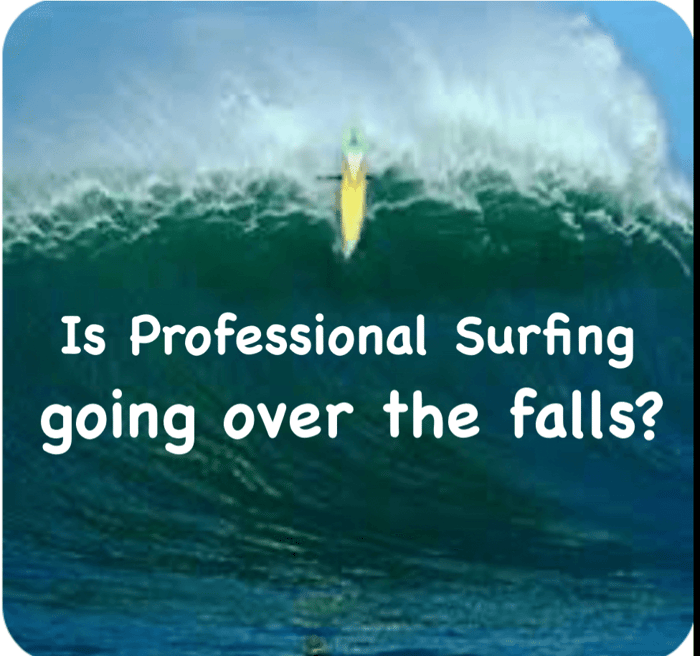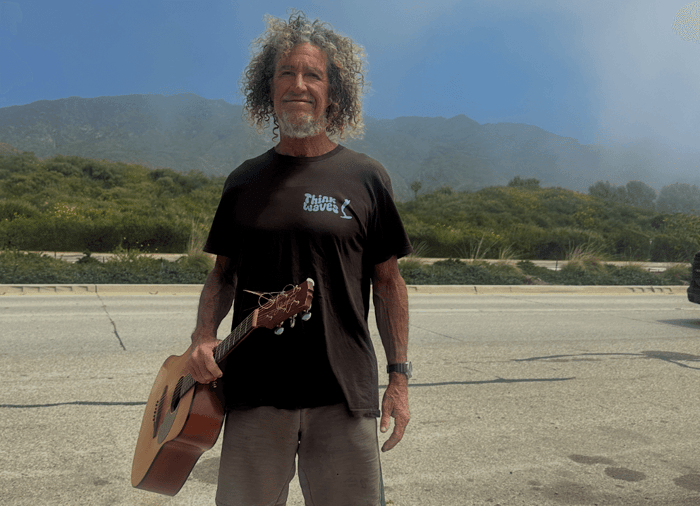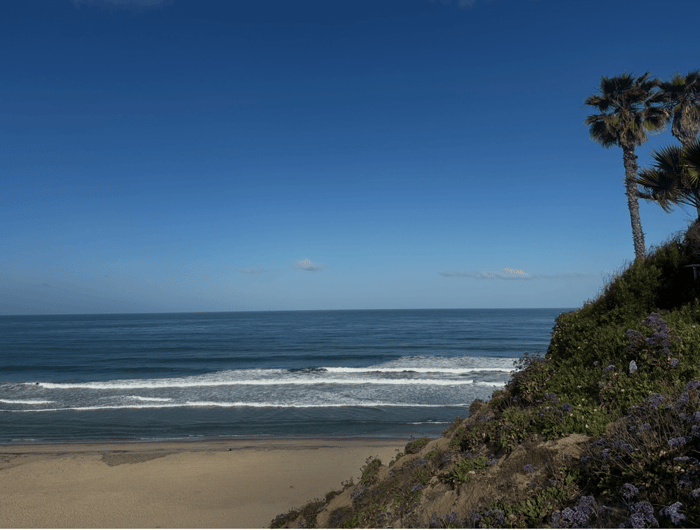Professional surfing officially debuted in 1976 with the founding of the International Professional Surfers (IPS) Tour, which was the first structured professional surfing circuit providing a platform for surfers to compete globally for money. However, hardcore surfers did not eagerly welcome pro surfing especially when it came time for a competition at their local break. Surfers never viewed pro surfing as legitimate , in truth because it wasn’t and still isn’t.
Watch Surf History with Michael Willis on the Epic Surf News Podcast
Pro surfing had a rough start
In the beginning professional surfers were actually looked down on by the surfing community at large especially in Hawaii. Foreign pros were literally being beat up by disgruntled locals who viewed them as grifters and carpetbaggers who came to take, take and take without giving back. Pro surfing was referred to as the circus and it’s clowns.
Name Changes
Despite the lack of support from the hardcore surfing community, pro surfing managed to attract corporate sponsors and continue on. The IPS lasted for seven years. However, IPS was replaced by the Association of Surfing Professionals (ASP) in 1983 due to internal criticism and a push for greater professionalism and commercial growth in the sport. Meanwhile hardcore surfers remained opposed to commercial growth in surfing.
In 1982, Australian surfers Peter Townend and Ian Cairns criticized the IPS and saw an opportunity to form their own business, initiating the organization’s decline. Ian Cairns then launched the ASP in January 1983, attracting world circuit organizers and effectively taking over the management of professional surfing from the IPS. Hardcore surfers were still not buying into it and remained overly unenthusiastic, thus, pro surfing remained unpopular as ever.
The Association of Surfing Professionals (ASP) changed its name to the World Surf League (WSL) at the start of the 2015 season to adopt a name that was easier to understand and more globally recognizable. The new name was intended to better serve fans, athletes, and partners, and to support the growth of pro surfing worldwide. Surfers continued to look at the name change as the same ol stale bread just put in a new wrapper.
Exodus
Fast forward to 2025 and we have to commend pro surfing for enduring close to forty years. The big question now is how will it continue and where does it go from here? Is professional surfing going over the falls? The WSL is suffering from a loss of star power and talent. Kelly Slater is all but retired and many of the sport’s biggest stars, such as John John Florence, Stephanie Gilmore, and Gabriel Medina, are sitting out or taking extended breaks, leaving the tour without its most recognizable and accomplished athletes.
Meanwhile regular old amateur surfing is more popular than ever. John John Florence and other elite surfers may be taking breaks from professional surfing but they aren’t taking any breaks from surfing itself. Surfing doesn’t need pro surfing, and its top performers don’t need it either. Pro surfing needs surfing not the other way around.
Enterprising self promoters such as Jamie O’Brian, the Florence Brothers, Garrett McNamara, Ben Gravey and others have financially done very well without being on the world surfing tour. These surfing entrepreneurs choose where they want to go, when they want to go, for how long or short they want to go for and most importantly who they want to go with them. Let’s just say they don’t have to travel around with the circus to make a buck.
Unstable Career Path
Pro surfing is increasingly seen as a dead-end career, with many athletes facing financial insecurity, lack of education, and identity crises after their competitive days end. This instability discourages long-term commitment and investment in the sport. The lack of athlete support is a huge challenge for the WSL. Hardcore surfers never saw professional surfing as credible and apparently many professional surfers now agree. How can surfing legitimately call itself professional when none of its members actually receive financial compensation from the league.
What will it take to make Professional Surfing Credible?
The primary difference between a professional athlete and a non-professional athlete is financial compensation: real professional athletes are paid for their athletic performance, often earning a salary and endorsements, while amateur athletes typically do not receive payment beyond the experience itself.
It takes a lot of commitment, sacrifice and financial resources to become a professional surfer. If the WSL wants to earn the respect and credibility it desires from hardcore surfers, the public and its own members it needs to begin paying its athletes handsomely, just like other professional sports associations do.
Recruit new Talent
Professional surfers competing in the World Surf League (WSL) do not receive a guaranteed salary from the league itself, unlike professional athletes in baseball, football, or basketball. Instead, WSL surfers earn money through prize winnings based on their performance at each event. In reality all the surfers in the WSL are hardcore amateurs competing at their own expense.
The only way the WSL is going to be a assured it’s athletes are the worlds best surfers is going to be by giving the surfers a guaranteed substantial salary, just like the Major League Baseball MBL, National Football League NFL and pro basketball National Basketball Association do, with long term contracts assuring athletes financial stability an opportunity for a legitimate professional career.
Professional surfers shouldn’t have to cover their own travel and accommodation expenses, and their income should be a guaranteed fixed salary from the WSL supplemented by sponsorship. As it remains now only the WSL employees (such as staff, managers, and other roles) receive a traditional salary. WSL surfers are paid by event results and sponsorships, not a league salary like other major professional athletes.
In truth, professional surfing has never been professional. The only ones who are guaranteed a secure salary are the contest promoters themselves trying to make a buck off surfing. If the WSL is going to finally once and for all legitimize itself, it is going to require 100’s of millions of dollars of which it doesn’t have and never did. It’s time the WSL and their so called professional surfing starts giving back to the athletes rather than exploiting them, then and only then will professional surfing truly become professional. Professional surfing needs some real backing if it is to ever become real.
Much love all
If you enjoyed this please like, comment and share.




